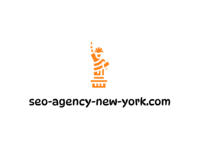
|
IN BRIEF
|
Optimizing images is a crucial aspect of enhancing your overall SEO performance. Images not only improve the visual appeal of your website but also play a significant role in driving traffic from search engines. By following best practices for image optimization, such as resizing, using descriptive file names and alt tags, and ensuring mobile compatibility, you can boost your site’s loading speed and accessibility. This guide will explore essential strategies that can help you achieve better SEO results through effective image management.
Image SEO Best Practices
When it comes to improving online visibility, optimizing images plays a crucial role in SEO strategies. Image SEO entails a series of techniques that enhance the performance of images in search engine results, ultimately leading to higher traffic and user engagement. To start, selecting relevant and useful images that directly relate to your content is essential. This means creating or sourcing high-quality images that visually support your articles.
Furthermore, resizing images to appropriate dimensions helps maintain load speed, which is vital for user experience and SEO rankings. For best results, aim to keep image file sizes below 100KB after compression. Additionally, employing descriptive file names and alt text will not only improve image accessibility but also enable search engines to understand the context of your images better. For mobile users, ensuring that your images are responsive is critical, as mobile-friendliness significantly influences search rankings.

Image Optimization for SEO
Effective image optimization is crucial in enhancing website visibility in search engines. One of the foundational steps involves resizing images to improve loading speed. It is recommended to keep image sizes under 100 KB for optimal web performance. Furthermore, choosing the right file formats, such as JPEG for photos and PNG for graphics, can significantly impact both quality and loading times. Employing alt tags effectively not only aids in search engine ranking but also enhances accessibility for users with visual impairments.
From a different perspective, adopting a responsive design is essential in today’s mobile-first world. As the number of mobile users continues to rise, ensuring that images render well across all devices is vital. This entails using media queries and flexible image dimensions to provide an optimal viewing experience. By implementing these strategies, businesses can leverage image SEO to connect more fluidly with their audience and ultimately boost their online presence.

Image SEO Optimization Strategies
Best Practices for Image Optimization
Optimizing images is crucial for enhancing your website’s overall SEO performance. Images not only help convey your message but also play a significant role in engaging users and improving page load speed. Here, we will explore practical tips for optimizing images effectively.
Understanding the fundamental aspects of image SEO can lead to improved search rankings and user experience. For instance, selecting the right image format can significantly impact loading times and quality. Using formats like JPEG for photographs and PNG for graphics can help tailor your images to their appropriate uses.
- Resize Images: Make sure to resize images to appropriate dimensions before uploading them to reduce loading time.
- Optimize File Names: Use descriptive and human-readable file names that incorporate relevant keywords to enhance search visibility.
- Utilize Alt Text: Implement alt tags that describe the content and purpose of the images for better accessibility and SEO.
- Make Images Mobile-Friendly: Ensure that images are responsive and adjust correctly to various screen sizes to cater to mobile users.
Furthermore, employing techniques like image sitemaps can help search engines locate your images more easily, promoting visibility across digital platforms. Understanding compression methods is essential too; ideally, aim for a file size of 100 KB or less to optimize performance without compromising quality.
Image SEO: A Comprehensive Guide to Enhancing Visibility
Optimizing images for search engines is a critical aspect of SEO that can significantly improve a website’s visibility. To start, it’s essential to select or create high-quality images that effectively represent your content and goals. This supports both user experience and search engine relevance.
One of the first steps in image optimization is to resize images appropriately. Large images can slow down your website, negatively impacting user experience and search rankings. Aim to compress images to 100 KB or less where possible. For additional technical considerations, using appropriate file formats—such as JPG for photographs and PNG for images requiring transparency—can also help balance quality and loading speed. Seeking detailed guidance on this matter can be beneficial, as outlined in sources like Quora.
Alt tags are another important factor in image SEO; they provide context to search engines about the content of an image. Descriptive alt tags can enhance accessibility and contribute to better search rankings, as they often appear in related image searches. Moreover, mobile optimization plays an integral role as well, since a significant portion of users access websites via mobile devices. Ensuring images are responsive and mobile-friendly is crucial; more insights can be found at this resource.
Utilizing image sitemaps can further aid search engines in discovering images on your site, enhancing indexing efficiency. This, combined with well-structured file names that include relevant keywords, solidifies a strong foundation for image visibility in search engine results. Developers can refer to guidelines from Google Image Search for best practices in this regard.
In summary, successful image optimization involves a blend of resizing, formatting, proper tagging, and ensuring mobile-friendliness. Valuable resources that provide further guidance on the nuances of image SEO include this article and Semrush’s insights. Through diligent implementation of these practices, you can significantly uplift your website’s search engine presence.

Optimizing images for SEO is essential for enhancing online visibility and improving user experience. The first step involves selecting or creating effective images that align with your content strategy. Next, pay close attention to image file names and ensure they are descriptive and include relevant keywords. Utilizing alt tags is crucial for accessibility and helps search engines understand the content of your images.
Additionally, it’s important to resize images and ensure they are compressed to improve loading speed, creating a more favorable browsing experience. Implementing responsive images guarantees compatibility across various devices, which is vital in today’s mobile-centric world.
By adhering to these best practices, such as using appropriate file formats and titles, you can significantly enhance your website’s performance in search engine results. With the right approach to image optimization, you can capture more traffic and achieve better engagement from your audience.
